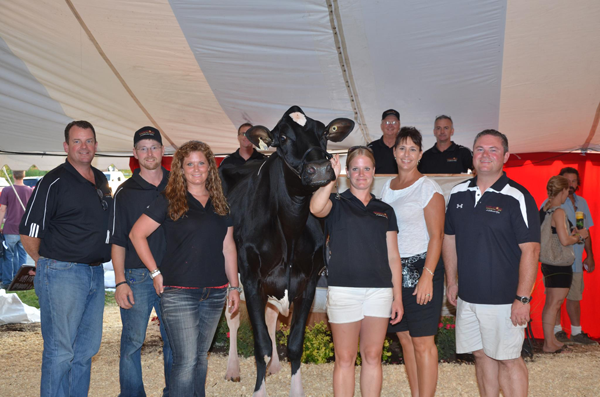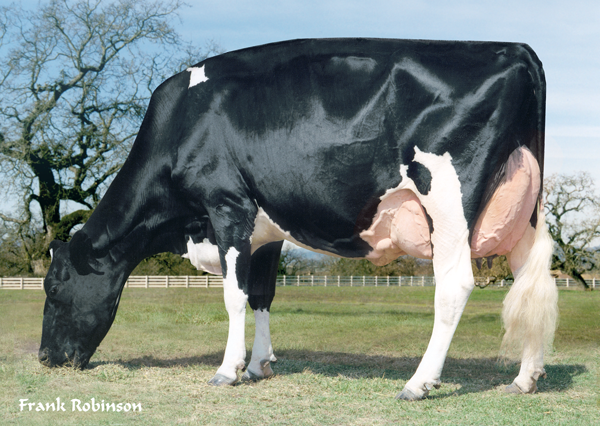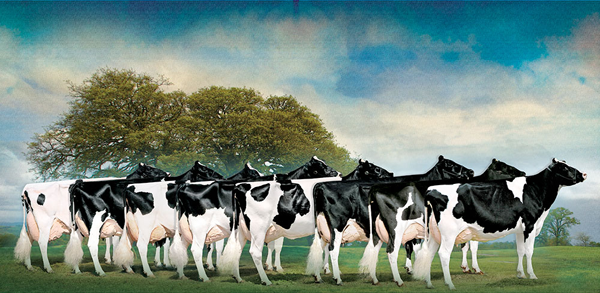| 1 – $52,000 MS Atlees Goldwyn Ariel-ET EX-92, Goldwyn x Atlee |
| 10 – $16,500 BVK Atwood Ana-ET (full sister to dam of Lot 9) born March ’11, Hardys Holsteins, buyer |
| 100 – $15,000 1st choice Supersire x Fortale Marsie Observer, GLPI+2971 |
| 103 – $2000 – Butlerview Bookem Shake-ET, a 5/12 Bookem full sister to Shade |
| 103A – $4500 – Butlerview Bookem Shade-ET, a 5/12 Bookem from Vision-Gen Sho A12024-ET x KY-Blue GW Dana-ET (VG-87 +2038 GTPI) |
| 104 – $5500 – 1st choice Let it Snow from July IVF flush from Vision-Gen Sho A12024-ET (GTPI +2224) |
| 105 – $5600 – 1st choice Supersire from June flush from Ms Alex Christmas Day-ET x Regancrest S Chassity-ET (EX-92 DOM) +2193 GTPI x 7 more VG & EX dams |
| 106 – $12,500 for choice from Courtlane-UR Chassity (EX-90 DOM) x Regancrest S Chassity (EX-92 DOM) |
| 107 – $20,000 – Ms Aubreys Gold Chip Ace-ET, a 12/11 Gold Chip at +3.29T out of Ms Atlees Shottle Aubry-ET VG-88 |
| 108 – $25,000 – 1st choice Gold Chip due in March, 2013 out of Ms Atlees Shottle Aubry-ET VG-88 then EX-92 Durham Atlee |
| 110- $8,400 – Toddsdale Braxton Rita-ET, a September calf from Long-Haven Gold Rochelle-ET EX-92 |
| 112- $5,000 Silvermaple Windbrook Candy, Dec ’11 Windbrook maternal sister to Camomile |
| 113- $5,700 – Delcreek Femme Fatal Dec ’11 Goldwyn x Delcreek K Royal Ruby, maternal sister to the All-American and All-Canadian Delcreek Fatal Attraction |
| 114- $10,000 – Rotaly Sid Layton Dec ’11 Sid x Rotaly Goldwyns Lizia x Blondin Talent Lasie from the Supra’s! |
| 115 – $4200 – 1st choice Let it Snow from July flush of Rocking-P Bowser Luna-ET +2204 GTPI |
| 115A – $225/embyro – 4 #1 Let it Snow embryos from Luna – IVF females |
| 115B – $200/embryo – 4 #1 Let it Snow embryos from Luna |
| 116 – $10,000 – Claquato-RHH At Rocky Ridge – due 8/12 to Advent – Atwood daughter of High-Mountain Ridge-ET (VG-88) x Ms Astrahoe Reno Storm Riva (VG-86) x Pinehurst Royal Rosa family |
| 119- $14,500 – Budjon-JK Atwood Elmond-ET November ’12 Atwood x Budjon-JK Durham Embrace-ET EX-95 |
| 12 – $8,500 – Sildajak Tristan Sassy 3-Red – R&W Senior 2-year-old |
| 120- $8,000 – Budjon-JK BX Emma Lynn-ETS Dec ’11 Braxton x Budjon-JK Emilys Edair-ET EX-94 |
| 121- $4,000 MS Reese Raizel, 3/10/12 Atwood x Beldavid Goldwyn Reese VG-87 2y |
| 121A- $6,300 – MS Reese Ribbon-ET (Atwood x Reese born 3/14/12) |
| 124 – $20,200 – Robin-Hood Clumbo-ET (EX-91), 3rd 5-year-old Western Spring National 2012 – Durham x Carnation Mica Connie-ET (EX-90) x Carnation Cleitus Caroline-ET (EX-91 2E GMD-DOM) x 8 more VG and EX dams |
| 125- $6,800 Butz-Butler Mac Bam Bam, Mac x Brasilia |
| 126- $9,200 MS Gold Chip Barbra-ET |
| 126A- $14,500 |
| 127 – $5800 – Ms Chassity Osmond Casi-ET, a 1/12 Osmond from Regancrest S Chassity (EX-92 DOM) |
| 128 – $8000 – Ms Chassitys Arm Comical-ET, a 3/12 Armitage from Regancrest S Chassity – same family as Gold Chip and Colt 45 – GTPI +2169 |
| 129- $3,800 MS Farnear Broc Bronze-ET, an October 2011 Jeeves Jives x Brocade |
| 13- $200,000 Mapel Wood Sudan Licorice GLPI +3992 GTPI +2543 #2 DGV female in the world at +4454 Sudan x Mapel Wood Man O Lucy x Comestar Goldwyn Lilac |
| 130- $2,800 Farnear Brocades Butter ET, Robust x Brocade x Barbie |
| 131 – $7200 – Ms Chassity Super Charo-ET, a 12/10 Super from Regancrest S Chassity (EX-92 DOM) |
| 132 – $3800 – Ms Chassity Sup Charlize-ET, a 12/10 Super from Regancrest S Chassity (EX-92 DOM) |
| 133- $3,900 Farnear Brocade Britestar-ET GTPI +2097, a May 2011 AltaJupiter x Regancrest G Brocade-ET EX-92 |
| 139- $15,000 1st choice McCutchen Female x Regancrest DGR Byrsha-ET GTPI +2325 |
| 14- $70,000 1st Choice Galaxy x MS Chassity Goldwyn Cash x Chassity |
| 146- $11,000 A&M Bushman Dest Merritt-ET *RC, Destry mat. sister to Sunburst |
| 147- $85,000 Earlen Goldwyn Secret VG-87 2y CAN, Grand Champion 2012 Ontario Summer Show |
| 15- $175,000 Misty Springs Epic Savannah, GLPI +3962, DGV +4481 #1 in the world. March ’12 Epic x Man O Man x Shottle Satin |
| 16 – $53,000 – Ralma Manoman Bluejay-ET +2272 GTPI – a 3/10 Man-O-Man from Ralma Shottle Chickadee-ET (VG-88 DOM) – full sister to Ralma Shottle |
| 17- $165,000 Benner Lavaman Boo Boo #5 GPA LPI heifer in Canada from Gypsy Grand Family |
| 1A- $42,000 MS Annas Epic Andreya-ET GTPI +2422, April ’12 Epic x MS Ariel Freddie Anna-ET x MS Atlees Goldwyn Ariel EX-92 |
| 2- $290,000 Silvermaple Damion Camomile VG-89 3y, Res. Grand Champion WDE 2011 |
| 20- $38,000 1st choice Mogul x Seagull-Bay Shauna Saturn x Ammon – Peachey Shauna |
| 21 – $129,000 – Hammer-Creek Sha Kassidy-ET, a 2/12 Shamrock at +2589 GTPI – the highest GTPI heifer in the sale! |
| 22 – $50,000 – Regancrest Shamrock Lava-TW, a 12/11 Shamrock with +2549 GTPI from Regancrest Jose Lakisha-ET (VG-87) x Miss Outside Lookin In-ET (VG-88) x 4 more VG & EX dams |
| 23 – $135,000 – Ms Regelcreek Cmrn Ardis-ET, a 4/12 Cameron +2572 GTPI out of a Planet from the Adeen family. The #1 Cameron in the breed! |
| 25- $10,200 – Crossbrook Minister Charity Jr. Champion NY Spring Show, Jr. Champion Mid-East Spring National 2012 Nominated All-American Spring Calf 2011 |
| 26 – $17,500 – Claquato-RH Escape-ET (VG-89) – Nom. All-American & All-Canadian 2011 – 9/09 Dundee from Skagvale Miracle Ellee (EX-91) – potential 10th gen. EX |
| 27 – $13,500 – Budjon-Vail Damaris-Red-ET, a 9/2011 red fall calf by Camden-Red out of Budjon Redmarker Desire EX-96 3E |
| 28 – $8,200 – Ms Winterfield SC Trend-Red, a 9/2011 Contender out of 11 EX dams |
| 29- $18,500 Milksource Fever Golden, 1st summer yearling at IL Championship Show 2012 |
| 2B- $10,000 2nd choice Windhammer due 11/26/12 x Camomile |
| 3- $490,000 Cookview Goldwyn Monique VG-89, Butler and Price buyers, Gene Iager, contender |
| 30- $10,200 Ehrhardt Gold Chip Lilac-ET, a March ’12 Gold Chip x Idee Lustre EX-95 |
| 31- $11,500 Duckett-SA Braxton Fran-ET 9/4/11 x Harvue Roy Frosty EX-97 |
| 32 – $20,000 – 1st choice Mascalese or Windbrook out of Eastside Lewisdale Gold Missy EX-95-CAN, Supreme Champion at Expo and the Royal in 2011 |
| 33 – $32,000 – 1st choice Mascalese due in March, 2013 out of Morsan Miss Snow Flake +2172 GTPI, the Snowman daughter of Gold Missy |
| 34 – $23,000 – Butz-Hill Misy GC Madlyn-ET, +2332 GTPI Gold Chip our of a Man-O-Man granddaughter of Eastside Lewisdale Gold Missy EX-95 |
| 35- $19,000 1st Choice Headlienr x Regancrest S Chassity |
| 38- $38,000 1st choice McCutchen x MS Chassity Snowman Clea x Chassity |
| 39A- $122,000 Feb ’12 O-Man Just x Blue-Horizon Planet Edith |
| 39B- $117,000 April ’12 AltaKool x Planet Edith |
| 4 – $154,000 – RockyMountain Gold Winter VG-89-CAN – *RC Goldwyn that will show as a 4-year-old this fall. Nominated All-Canadian and All-American Senior 3-year-old in 2011 |
| 40- $60,000 1st choice Uno x Blue-Horizon Planet Edith |
| 41 – $90,000 – choice of 12/11 Shamrocks from Coyne-Farms Fredi Jeven-ET +2286 GTPI x Coyne-Farms Ramos Jelly (VG-85 DOM +2109 GTPI) x 4 more VG & EX dams |
| 42 – $45,000 – 2nd choice Numero Uno out of Sandy-Valley Robust Ruby-ET GTPI +2495 |
| 43- $139,000 Aurora-Rama Yano Harmony-ET +2570 GTPI |
| 44- $40,000 Aurora-Rama GChip Havily-ET |
| 45- $125,000 Curr-Vale Delish-Red-ET GTPI +2325 |
| 46 -$30,000 – SRP Magnus Z013699, a 3/12 Magnus with +2501 GTPI out of Dorcy dam then the Zip family |
| 47- $120,000 MS Rollen-NC Cam Lexie P-ET *PO *RC #1 GTPI PO heifer in the US |
| 47A- $95,000 MS Rollen-NC Camr Lucy-P-ET *PO*RC #1 PTAT polled animal in the world |
| 49 – $35,000 – 1st choice Mogul due in January, 2013 out of Comestar Lautamire Planet VG-85-CAN, the #1 GLPI cow in Canada at +3584. |
| 5- $187,000 Butz-Butler Gold Barbara-ET VG-87 bred to Atwood, Goldwyn x Brasilia EX-92 x Barbie, Budjon Farms and Peter Vail, buyers |
| 50 – $30,000 – 1st choice Mogul due in October out of Comestar Lautamai Man O Man +2964 GLPI |
| 51- $40,000 – 1st choice Headliner from Feb ’13 calves x Vison-Gen SH Frd A12304-ET x Applouis Jet Stream Alda VG-85 |
| 52- $32,000 – 1st choice Mogul x Miller-FF Bookem Esther-ET GTPI +2463 x Nova Shottle Evelyn-ET VG-86 |
| 53 – $17,000 – 1st choice Gold Chip x Dubeau Dundee Hezbollah EX-92 from six transfers due March 6, 2013 |
| 54- $9,800 – 3rd choice Atwood x Dubeau Dundee Hezbollah EX-92, six females due September |
| 55 – $18,000 – Ms Emilyann Alex Emery-ET (VG-85) – Alexander x Wabash-Way Emilyann-ET (VG-88 DOM) x Crockett-Acres Elita-ET (VG-87 DOM) x 9 more VG & EX dams |
| 56 – $4,000 – Quality-Ridge Advn Abby-Red, Res. Grand Champion MN State Show 2012 – Advent x Quality-Ridge Talent Anita (VG-87) |
| 57 – $24,000 – Ms Talent Applicious-Red, an EX-91 Talent daughter of All-American Apple |
| 57A – $8,500 – 1st choice of Redburst or Atwood out of Ms Talent Applicious-Red EX-91 |
| 58 – $26,500 – BBM Gold Chip Apple-ET, a *RC +2151 GTPI Gold Chip daughter of Ms Candy Apple-Red-ET VG-87, then EX-95 Apple |
| 59- $9,500 – 1st choice Supersire x MS Goldwyn Adorable-ET RC VG-87 x MS Talent Applicious-Red-ET GP-84 CAN |
| 6- $48,000 Regancrest Brasilia-ET EX-92, Shottle x Barbie |
| 60 – $7800 – Robin-Hood LKI Carrissa – 3/10 Atwood x Robinhood Connie-ET (EX-90) x Carnation Leduc Connie (EX-91 2E) |
| 61- $55,000 Mapel Wood Epic Giggle-Red +2530 GLPI Epic Man-O-Man that carries the variant red gene |
| 63 – $27,000 – Dymentholm Sunview Satin-ET, a 4/12 *RC Epic daughter +2352 GTPI out of VG-87 Des-Y-Gen Planet Silk +2220 GTPI |
| 64 – $23,000 – 1st choice MAS out of Dymentholm Sunview Santana, a +2961 GLPI Snowman daughter of Planet Silk |
| 65 – $56,000 – Stantons Shamrock City Girl, a 4/12 Shamrock with +2487 GTPI +3185 GLPI from Stantons Freddie Cameo x Stantons Lucky Cameo (VG-89) |
| 66 – $41,000 – Jolicap Emlilas Shamrock, a 3/12 Shamrock +2986 GLPI from Tramilda-N Baxter Emily-ET (VG-85) x Whittier-Farms Lead Mae family |
| 67 – $31,000 – Ransom-Rail Facebk Paris-Et +2380 GTPI – a 1/12 Facebook from Welcome Mac Peytan-ET (VG-87) +2134 GTPI |
| 68 – $60,000 – Siemers Snman Centuria-ET, a 6/11 Snowman +2341 GTPI out of Ralma Planet Century-ET (VG-86) +2323 GTPI from Ralma Juror Faith family |
| 69 – $16,000 – Comestar Model Lizbosy Lobster, a 1/12 Lobster +2334 GTPI +74P out of Comestar Model Lizboli Sydney VG-85-CAN |
| 7- $59,000 1st choice Numero Uno x RockyMountain Talent Licorice EX-95 |
| 70 – $24,500 – Vieuxsaule Supersonic Sugi +2344 GTPI, a 3/12 Supersonic from Vieuxsaule Bolton Halia (VG-87), then Vieuxsaule Allen Dragonfly (EX-94 2E) |
| 71 – $4,100 – Farnear-BH A Barbora-ET, a 4/12 Alchemy +2307 GTPI out of Farnear Brocad Brilliant-ET, a Man-O-Man daughter of Brocade |
| 72 – $20,000 – Farnear GC Bridg Bry-ET, a 3/12 Gold Chip out of Farnear Brocade Bridge, the Aftershock daughter of EX-92 Brocade |
| 73 – $20,000 – Choice of T-Spruce Armitage 4756-ET +2398 GTPI 1/12 Armitage or T-Spruce Armitage 4768-ET, a +2381 GTPI 1/12 Armitage both out of Lar-Lan Time Annabelle +2136 GTPI Time daughter from the Durham Annabell family |
| 74 – $15,500 – Choice of Wa-Del-DH Bookem Camara-ET, +2291 GTPI Bookem or Horstyle-RW Bookem Clear-ET +2317 GTPI out of Horstyle-RW Mano Cluster VG-85 +2185 GTPI |
| 75- $18,500 MS Boyana FB Babe-ET GTPI +2413 x Farnear-TBR Bosr Boyana-ET x Klassic Mac Barb-ET VG-85 |
| 76- $30,000 MS Benshae Benish-ET GTPI+2308, March ’12 Shamrock x Farnear-TBR Benshae-ET |
| 77- $8,400 – Tranquility AC Drear Candy-ET GTPI +2355 x Ronlee Boliver Dreary-ET x Ronlee Outside Dabble-ET EX-91 |
| 78- $18,000 – Nova-TMJ Jeeves Eleta-ET GTPI +2308, Jeeves x Nova-TMJ Golden Echo-ETS VG-88 |
| 79- $8,000 – Choice of three Gold Chip females x Regancrest-BH Super Delish x Regancrest-BH Delica-ET x Windsor-Manor Z-Delight-ET 2E-93 |
| 8 – $34,000 – Cam-Bing Gold Nila-ET (VG-88) – Goldwyn maternal sister to Bingland Leduc Nancy (2E-96) -dam is Bingland Starb Noel-ET (VG-88) |
| 80- $10,000 – UFM-Dubs Sherun-ET GTPI +2304, a Super daughter of UFM-Dubs Sheray-ET bred 5-29-12 to Lithium |
| 81 – $23,000 – 1st choice MAS out of Ms Planet Cheri-ET +2257 GTPI from an EX-92 Goldwyn dam |
| 82 – $16,000 – 1st choice Mascalese out of Gloryland Linette Rae VG-89 +2217 GTPI, a Goldwyn from the Roxys |
| 84 – $31,000 – 1st choice McCutchen from Ladys-Manor Dominique-ET, a +2425 GTPI Shamrock from the Dur Chans |
| 85- $25,000 – 1st choice McCutchen female x Velthuis Snowman Lorette-ETS GTPI+2360, calves due April 2013 |
| 86- $35,000 1st choice Uno x Boldi Snowman Lillico-ETS GTPI +2282 x MS Chartrois Planet Leoni-ET VG-87 2y CAN |
| 87 – $23,000 – 1st choice Mascalese due in February, 2013 out of Larcrest Cinergy-ET +2455 GTPI Robust out of Larcrest Crimson VG-89 |
| 88 – $25,000 – 1st choice Let It Snow due in April, 2013 out of Kellercrest Manoman Lacy-ET +2411 GTPI |
| 89 – $32,000 2nd choice Uno x Sully Planet Manitoba-ET GP-83 |
| 9- $29,000 1st choice MAS x BVK Atwood Arianna-ET VG-89, Int. Champion IL Championship Show |
| 90 – $20,000 1st choice Lithium x Sully Hart Gerard 147 GTPI +2344 x Sully Hart Manitoba GP-83 |
| 92- $21,000 1st choice Latimer x Langs-Twin-B Christa GTPI +2455 |
| 93- $17,500 1st choice McCutchen x Opsal Planet Fame-ET GP-84, from June IVF |
| 97 – $9,200 Marbri Shamrock Felicity GLPI +2906, March ’12 Shamrock x SerenityHill Frosty (full sister to Facebook) |
| 99 – $12,000 for 1st choice Let it Snow female x Gepaquette Iota Ravisette +2966 GLPI – from July flush – built in PA at +2364 GTPI |
| 99A – $11,500 for 1st choice Let it Snow female x Gepaquette Iota Ravariume +2904 GLPI from July flush – built in PA at +2334 GTPI |





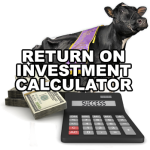
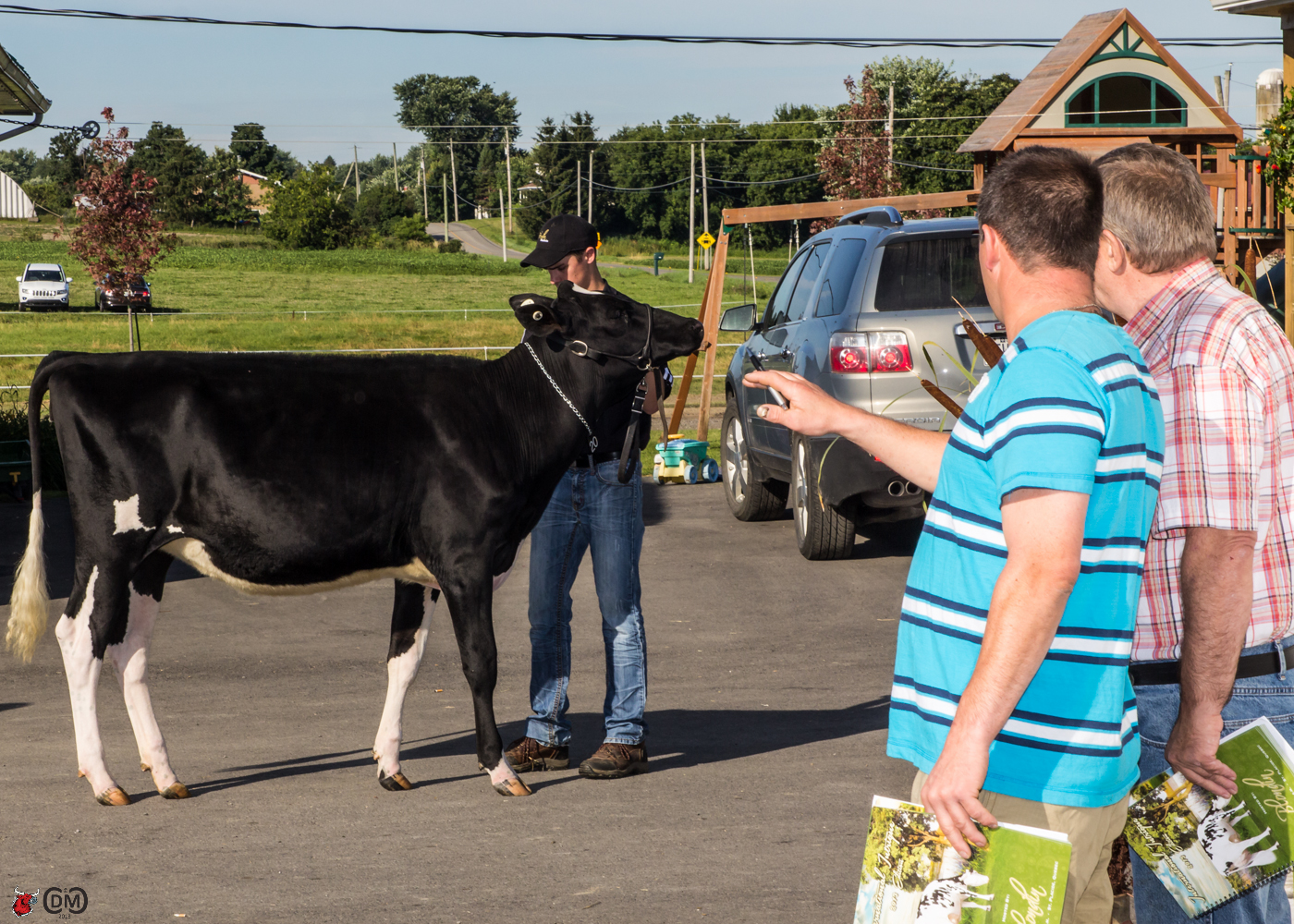
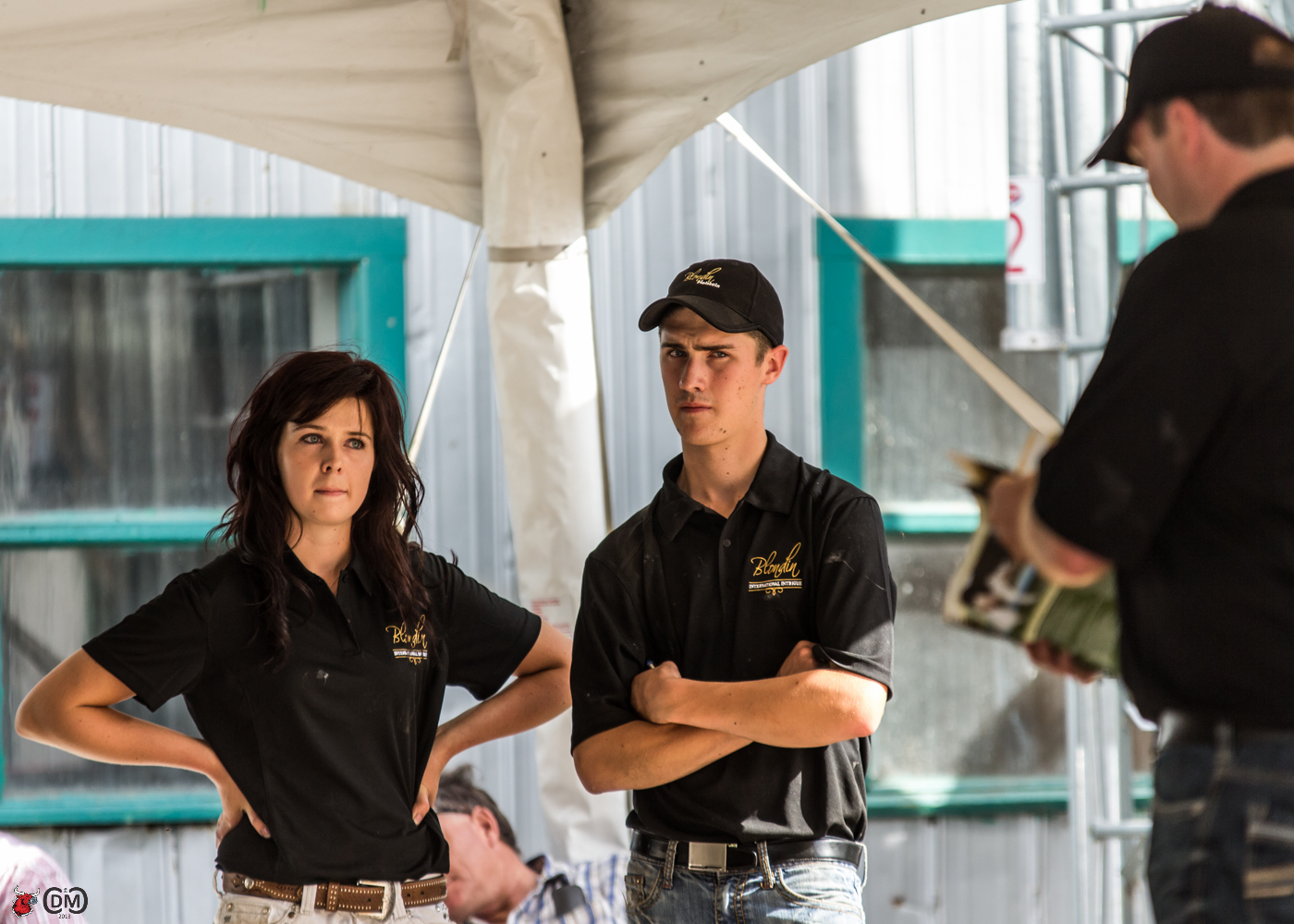
 “This cow is being stolen!” cries out Horace Backus, from the auctioneer’s box at the US National Convention sale. ‘A beautiful Jasper daughter with such a magnificent pedigree gets such a low offer – that is pure robbery!” adds Backus. Pounding his fists onto the podium, Backus has a point, since they are getting less than $5,000 for a very productive cow and moments earlier a very young calf sired by a genomic young sire sold for over $20,000. Here you have an animal already proving her profitability versus a calf that has nothing more to show for herself then a simple little test? I ask you ”Does the marketplace have it all wrong?”
“This cow is being stolen!” cries out Horace Backus, from the auctioneer’s box at the US National Convention sale. ‘A beautiful Jasper daughter with such a magnificent pedigree gets such a low offer – that is pure robbery!” adds Backus. Pounding his fists onto the podium, Backus has a point, since they are getting less than $5,000 for a very productive cow and moments earlier a very young calf sired by a genomic young sire sold for over $20,000. Here you have an animal already proving her profitability versus a calf that has nothing more to show for herself then a simple little test? I ask you ”Does the marketplace have it all wrong?”
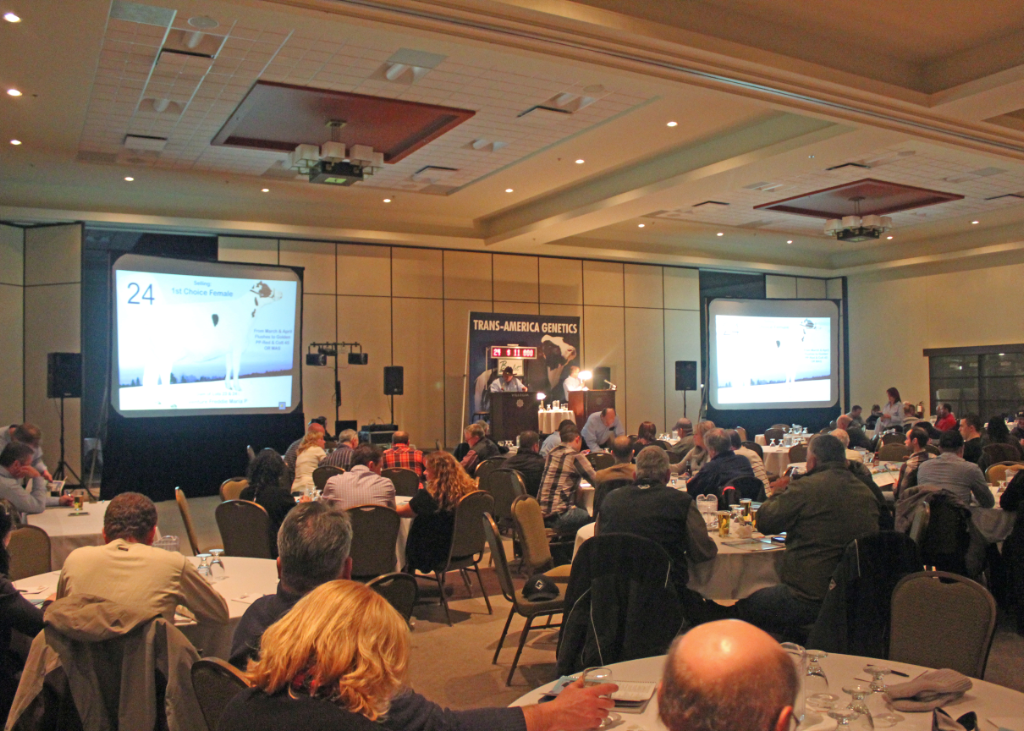 In our recent analysis of what is selling at the Canadian Auction sales of 2013, we found that high genomic animals, (animals that are over 3,000 LPI) outsold all other animals by a whopping 61%. (Read more at
In our recent analysis of what is selling at the Canadian Auction sales of 2013, we found that high genomic animals, (animals that are over 3,000 LPI) outsold all other animals by a whopping 61%. (Read more at 